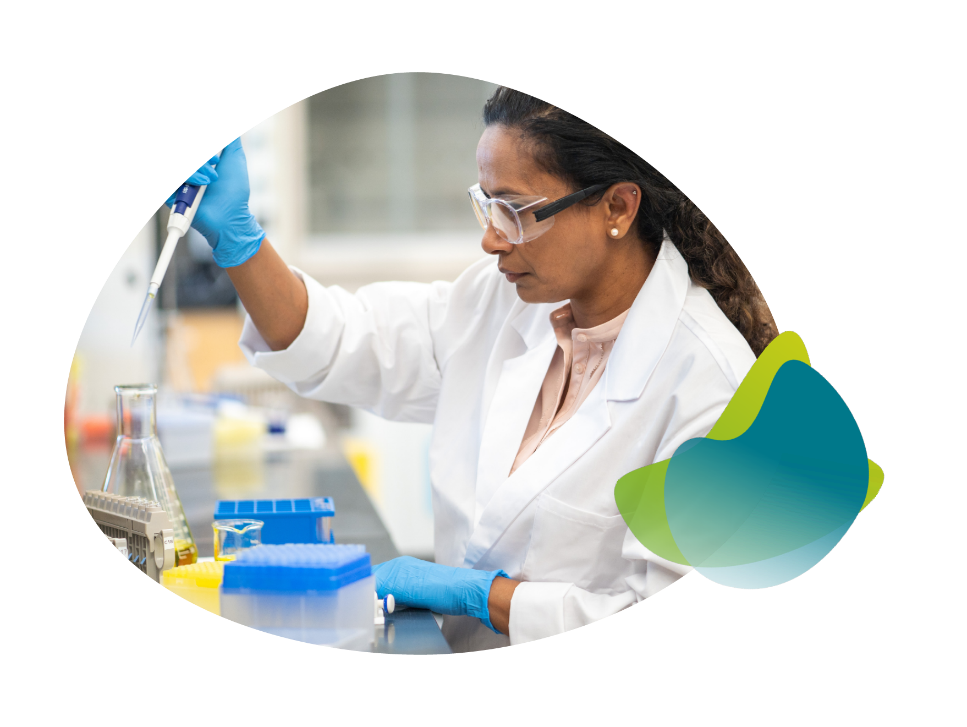In this article, scientists from LGC Biosearch TechnologiesTM share their expertise on how to get consistent, reliable data from qPCR assays for pathogen detection.
1. Apply good laboratory practices
Evaluate pathogen testing protocols and conduct best laboratory practices, as listed below:
- Utilize the Minimum Information for Publication of qPCR Experiments (MIQE) guidelines to optimize results. Study the good practice guide for the application of quantitative PCR (qPCR) for more information.
- Wear proper personal protective equipment (PPE). Study the CDC guidelines to learn how to prevent the transmission of infectious diseases in a healthcare context.
- Utilize EPA-registered disinfectants that are effective against common pathogens for the decontamination of work surfaces.
- Utilize nuclease-free, molecular biology-grade plasticware and reagents, as well as light-protective tubes for light-sensitive probes.
- Confirm that surfaces are free of DNA or RNA templates through decontamination of surfaces with a solution containing 10% bleach. Follow this by wiping down the surface with a 70% ethanol solution.
Identifying where your workflow is susceptible to contamination
The COVID-19 pandemic required laboratories to operate at a record scale in a reduced timelines creating more potential opportunities for accidental template contamination. Three basic recommendations to asses your workflow are as follows:
- Assign workspaces for each step with clear, physical separation of pre-PCR and post-PCR material.
- Determine a clear, unidirectional route between workspaces.
- Change protective equipment before moving to a different workspace.
The best protection against possible contamination is prevention. Thus, every workflow should be assessed with help from the LGC Biosearch Technologies™ qPCR contamination assessment and mitigation guide.
2. Prepare for a high-throughput workflow
Ensure that the laboratory has adequate resources to handle a high quantity of samples:
- Clearly define the roles and responsibilities of staff to streamline the workflow.
- Reserve sufficiently skilled staff for the efficient management of each step of the qPCR workflow.
- Verify batch testing of reagents and have a contingency plan in place for handling disruptions to supply.
- Inhibit travel between clean and PCR areas.
- Prepare for regular quality control measures, such as calibration and maintenance of instruments, environmental swabbing for monitoring contamination, as well as deep cleaning.
- Select partners who can support the implementation and execution of high-throughput testing with resources, tips for troubleshooting, and responsive customer service.

Image Credit: LGC Biosearch Technologies
3. Maintain sample integrity
The inadequate collection, storage, and transport of specimens can result in false test results. To avoid this, consider the following:
- Study relevant guidance for the collection and handling of clinical specimens for testing.
- For instance, the CDC provides the following guidance for SARS-CoV-2:
- Storage of specimens between 2 and 8 °C for up to 72 hours after collection.
- If an extraction delay is anticipated, storage of specimens should be at -70 °C or less.
- Storage of extracted RNA should be at -70 °C or colder.

Image Credit: LGC Biosearch Technologies
4. Foster resilience in your nucleic acid extraction workflow
Choose a nucleic acid (NA) extraction and purification method that delivers high-quality RNA and DNA from the necessary sample type but also reduces the cost per sample, maximizes samples per instrument, and offers supplier flexibility.
- Ensure that your NA isolation method can be used with the sample source.
- Utilize open NA isolation workflows that can employ reagents from more than one supplier to mitigate the effect of reagent shortages.
- Assess whether direct amplification is compatible with your workflow.
The sbeadex™ Pathogen Nucleic Acid Purification Kit from Biosearch Technologies is a robust, magnetic bead-based viral RNA and DNA preparation kit that is validated for utilization with a wide variety of human sample pathogens and matrices.
It is rapid, easy to scale, and also compatible with any open diagnostic workflow, such as the oKtopure™ automated nucleic acid extraction system.

Image Credit: LGC Biosearch Technologies
5. Standardize the testing process
Take the following steps to maximize the quality of data:
- Fully automate the testing process with a qPCR-based platform, including Biosearch Technologies’ SARS-CoV-2 RealTime and End-Point RT-qPCR Test, to support efficient and reliable results.
- Utilize suitable controls to support the validation of assay functionality and extraction reagent integrity.
- Randomize the location of samples and controls in the plate to lessen systematic biases introduced by instrumentation or pipetting. Validate testing accuracy with the AccuPlex™ Reference Material, which is developed for measuring the performance of pathogen assays, delivering both a positive and a negative reference solution for validating testing accuracy.
- Guarantee an accurate determination of assay performance using samples of high titer and at a Limit of Detection (LOD).

Image Credit: LGC Biosearch Technologies

 Download the full e-book with more tips
Download the full e-book with more tips

About LGC Biosearch Technologies
Together, we help you advance.
Whether you’re using marker-assisted selection to develop more nutritious and sustainable crops or developing the next generation of molecular diagnostic tests, clinical genomics assays, or novel oligo therapeutics, accurate and high-quality data is everything. And so is speed.
To help keep your mission-critical projects on target and moving quickly, LGC provides a large integrated portfolio of products and services to support your entire genomics workflow and help at every stage of your product development pipeline. From R&D through to large-scale commercialization, our products and services scale up when you do.
Watch the video to see how our unified genomics portfolio helps you discover more, speeding up your work to improve the human condition.
Sponsored Content Policy: News-Medical.net publishes articles and related content that may be derived from sources where we have existing commercial relationships, provided such content adds value to the core editorial ethos of News-Medical.Net which is to educate and inform site visitors interested in medical research, science, medical devices and treatments.